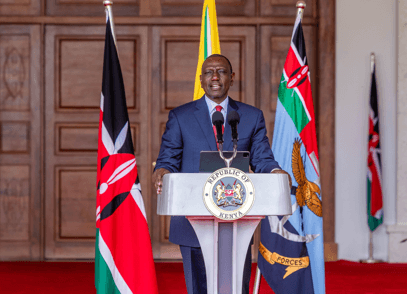The East African Wild Life Society reviewed the Environmental and Social Impact Assessment report regarding the proposed upgrade of the Ihithe-Abardare Forest-Ndunyu Njeru road and wishes to voice its alarm at the environmental damage the planned development will entail.
The project is scheduled for implementation by the Kenya National Highways Authority
The immediate consequences of converting the current narrow murram road in the Aberdare National Park into a wide tarmac road include opening up the thoroughfare to more traffic, including lorries, through the park at speeds higher than the 40 KPH limit and vehicles traversing 25 km of closed canopy forest and via other protected and ecologically sensitive areas.
The Aberdare ecosystem is a critical water catchment for Kenya and an important biodiversity hotspot.
The ESIA report asserts that the environmental impacts will be addressed at all stages of the project and that Kenha and its consulting engineers will be guided by sound environmental principles.
However, our opinion is that the assertion is biased and misleading for the following reasons.
First of all, the report assumes that the decision to implement the project is a fait accompli and all that needs to be done is put in place a few measures in an attempt to mitigate any environmental damage.
It is, however, obvious to us that the focus of the authors of the ESIA report appears to be the impact of the project at the construction stage. In our estimation, the authors failed to examine and address the environmental impact of the road after it is commissioned.
For example, the mitigation measures recommended in the report dwell mainly on what actions the contractors should take to minimise damage but fail to anticipate the cost of environmental management activities that will be incurred by both the Kenya Wildlife Service and Kenya Forests Service after the project is completed when the changes are expected to require new conservation interventions.
An ESIA report must identify, predict and evaluate the economic, environmental and social impacts of a proposed project before, during and after implementation by objectively providing baseline information for understanding the potential positive and negative consequences.
It must also provide unbiased forecast data on the potential environmental consequences for decision-making and promote environmentally sound and sustainable development.
It is our considered opinion that the ESIA report on the proposed upgrading of the Ihithe-Abardare Forest-Ndunyu Njeru road is incomplete and fails to provide sufficient information to justify the implementation of the project.
The report cannot, therefore, on its own, be used by the National Environmental Management Authority and other decision-making institutions as a reference guide to inform a decision to authorise the implementation of the road upgrade project.
This very project was rejected by Nema vide a letter referenced NEMA/EIA/5/2/421 on the grounds that it would have numerous adverse impacts on the ecosystem. The ESIA report has not provided sufficient information to disapprove Nema’s stand.
The Aberdares ecosystem supports millions of people as a critical water catchment and any proposed interference or encroachment requires a thorough analysis of the consequences to ensure that the country does not shoot itself in the foot even as it strives to ensure that the effects of climate change do not worsen the existential circumstances of its inhabitants.
The considered opinion of the East African Wild Life Society is that the Ihithe-Abardare Forest-Ndunyu Njeru road project should not be implemented and should be held in abeyance pending further analysis of the cost-benefit evaluation of the road expansion.
We would like to suggest that the following actions be carried out to arrive at an objective conclusion on the most environmentally-friendly cause of action.
A Total Economic Valuation to measure the benefits of the Aberdare ecosystem services and goods in monetary terms and their contribution to human well-being, and a Sustainability Impact Assessment to measure the impact of the project against its viability to ensure that the actions of the current generation do not compromise the well-being and ecological health of posterity.
We would also like to draw the attention of the project’s proponents to a detailed study conducted in 2020 by the University of Nairobi, Oxford University and the University of Amsterdam entitled 'Evaluating the socioeconomic potential of road development projects around the Aberdare range' which concluded that the proposed road upgrade will result in very little socio-economic benefits to the country.
Executive director, East African Wild Life Society













![[PHOTOS] Three dead, 15 injured in Mombasa Rd crash](/_next/image?url=https%3A%2F%2Fcdn.radioafrica.digital%2Fimage%2F2025%2F11%2Fa5ff4cf9-c4a2-4fd2-b64c-6cabbbf63010.jpeg&w=3840&q=100)

